
Progress in Artificial Intelligence
Scope & Guideline
Driving Breakthroughs in Intelligent Systems
Introduction
Aims and Scopes
- Machine Learning and Deep Learning Techniques:
The journal covers a wide array of machine learning and deep learning methodologies, including supervised and unsupervised learning, reinforcement learning, and hybrid models. This encompasses applications in medical diagnostics, image processing, and predictive analytics. - Healthcare Applications:
A significant portion of the research published addresses healthcare challenges, utilizing AI for disease diagnosis, patient monitoring, and treatment prediction, thereby contributing to improved healthcare outcomes. - Optimization Algorithms:
The journal also focuses on optimization techniques, such as evolutionary algorithms and swarm intelligence, applied to solve complex problems in various fields including engineering, finance, and logistics. - Interdisciplinary Applications:
Research often spans multiple disciplines, showcasing AI's versatility in areas like robotics, environmental science, and social sciences, highlighting its role in solving diverse real-world problems. - Explainability and Ethics in AI:
There is a growing emphasis on the explainability of AI models and ethical considerations in AI applications, reflecting the journal's commitment to responsible AI development.
Trending and Emerging
- Self-Supervised Learning:
There is a growing trend towards self-supervised learning techniques, which allow models to learn from unlabeled data, enhancing their efficiency and applicability in real-world scenarios. - Explainable AI (XAI):
The emphasis on explainability in AI is increasing, with researchers focusing on developing models that provide insights into their decision-making processes, which is crucial for trust and transparency. - Federated Learning:
Federated learning is gaining traction as a method for training AI models across decentralized data sources while preserving privacy, reflecting the increasing importance of data security in AI applications. - AI in Mental Health and Social Media Analysis:
Research focusing on AI applications in mental health, particularly through social media data analysis for suicide ideation detection, is emerging as a significant area due to its societal relevance. - Integration of AI with IoT:
The convergence of AI with Internet of Things (IoT) technologies is becoming a prominent theme, with studies exploring cognitive IoT systems that enhance automated decision-making and predictive capabilities.
Declining or Waning
- Traditional Statistical Methods:
There appears to be a waning interest in purely traditional statistical methods without integration with machine learning techniques, as more researchers favor advanced AI methodologies for data analysis. - Basic Classification Models:
The focus on basic classification models has declined, with researchers increasingly opting for more sophisticated, hybrid models that incorporate deep learning and ensemble techniques. - Rule-Based Systems:
Research on traditional rule-based systems has decreased, likely due to the rise of data-driven approaches that provide more flexibility and adaptability in problem-solving. - Narrow AI Applications:
There is a noticeable reduction in studies centered around narrow AI applications, as the field shifts towards generalizable and robust AI systems capable of handling more complex and varied tasks. - Single-Domain Focus Studies:
Papers that focus solely on a single domain without interdisciplinary connections are less frequent, as the trend moves towards multidisciplinary approaches that leverage AI across various sectors.
Similar Journals
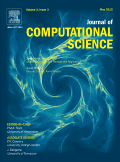
Journal of Computational Science
Transforming Ideas into Computational SolutionsThe Journal of Computational Science, published by Elsevier, is a premier academic journal that serves as a vital platform for researchers and professionals in the fields of computer science, modeling, and simulation. With an ISSN of 1877-7503 and an E-ISSN of 1877-7511, this journal focuses on the latest advances in computational methodologies and their applications, fostering interdisciplinary dialogue and collaboration. As of 2023, it holds an impressive Q2 ranking in multiple categories, including Computer Science (miscellaneous), Modeling and Simulation, and Theoretical Computer Science, showcasing its relevance and impact within the scholarly community. The journal features comprehensive research articles, reviews, and case studies that contribute significantly to the understanding and development of computational techniques. With its high standing in Scopus rankings, including a 79th percentile ranking in Mathematics - Modeling and Simulation, the Journal of Computational Science is an essential resource for anyone seeking to advance their knowledge and research in this dynamic field.
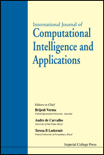
International Journal of Computational Intelligence and Applications
Connecting Theory and Practice in Computational IntelligenceThe International Journal of Computational Intelligence and Applications, published by WORLD SCIENTIFIC PUBL CO PTE LTD, is a prominent journal dedicated to advancing the field of computational intelligence and its applications, with a keen focus on innovative methodologies and theoretical frameworks. With an impact factor reflective of its growing influence, the journal is classified in Q3 for Computer Science Applications and holds Q4 standings in both Software and Theoretical Computer Science as of 2023, showcasing its critical niche within these disciplines. Established in 2008 and converging through 2024, this journal serves as a vital resource for researchers, professionals, and students in Singapore and beyond, promoting scholarly communication and collaboration. Although it is a non-open access journal, it still provides a wealth of information that is readily accessible through institutional subscriptions and library resources. Researchers contributing to the journal benefit from its wide reach and dedicated readership, making it a substantial platform to disseminate groundbreaking research and insights.
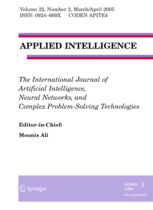
APPLIED INTELLIGENCE
Connecting research and practice in the world of AI.Applied Intelligence is a prominent peer-reviewed journal that has been instrumental in advancing the field of Artificial Intelligence since its inception in 1991. Published by Springer, a reputable name in academic publishing, the journal focuses on the innovative applications of intelligent systems, algorithms, and methodologies across various disciplines. With an impressive Q2 ranking in the Artificial Intelligence category for 2023, and a Scopus rank of #117 out of 350 in its field, Applied Intelligence is recognized for its significant contributions and rigorous standards. The journal is accessed primarily through subscription, ensuring that high-quality research reaches the academic community and industry professionals alike. Its commitment to disseminating cutting-edge research makes it an invaluable resource for researchers, practitioners, and students interested in the practical implications of AI advancements. Join a community dedicated to exploring the transformative power of artificial intelligence and stay ahead in this ever-evolving field!

NETWORK-COMPUTATION IN NEURAL SYSTEMS
Advancing Insights in Neural Computation and Network TheoryNETWORK-COMPUTATION IN NEURAL SYSTEMS is a distinguished journal published by Taylor & Francis Inc, focusing on the innovative intersection of network theory and neural computation. Since its inception in 1990, this journal has provided a vital platform for researchers and professionals in the field of neuroscience, exploring the dynamics of neural networks and computational models. With its current Q3 category ranking in Neuroscience (miscellaneous) and a robust position in Scopus, the journal plays a critical role in advancing knowledge and discussion within this interdisciplinary area. The journal addresses a wide range of topics related to the computational aspects of neural systems, fostering collaboration and providing valuable insights amongst scholars. Although it is not an open-access publication, its well-curated content remains accessible through institutional subscriptions, ensuring that significant research reaches the hands of those who need it. As it continues to evolve through 2024 and beyond, NETWORK-COMPUTATION IN NEURAL SYSTEMS stands as a key resource for anyone deeply engaged in understanding the complexities and intricacies of neural computations.
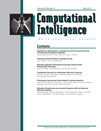
COMPUTATIONAL INTELLIGENCE
Exploring the Intersection of Technology and Mathematical TheoryCOMPUTATIONAL INTELLIGENCE is a prestigious, peer-reviewed journal published by Wiley, dedicated to advancing the field of artificial intelligence and computational mathematics since its inception in 1985. With an impressive track record reflected in its Q2 ranking in both the Artificial Intelligence and Computational Mathematics categories for 2023, this journal is a leading resource for researchers, professionals, and students seeking to explore cutting-edge methodologies, theories, and applications that underpin computational intelligence. The journal is indexed in Scopus, holding a remarkable rank of 18/189 in Computational Mathematics, placing it in the top 10% of its field, and ranks 111/350 in Artificial Intelligence. Although it does not offer open access, articles are readily accessible for institutions, ensuring a wide outreach within the academic community. With its commitment to fostering innovation and critical thought, COMPUTATIONAL INTELLIGENCE continues to be an essential platform for disseminating high-quality research that shapes the future of technology and mathematics.

SOFT COMPUTING
Navigating the Complexities of Modern Computational ChallengesSOFT COMPUTING is a premier international journal published by Springer, focusing on the interdisciplinary field of soft computing, which includes areas such as fuzzy logic, neural networks, genetic algorithms, and their applications. With an ISSN of 1432-7643 and E-ISSN 1433-7479, the journal is based in Germany and contributes significantly to the advancement of knowledge in its fields, boasting an impressive Scopus ranking that places it in the top echelons of Geometry and Topology, Theoretical Computer Science, and Software categories. In the 2023 category quartiles, it has achieved Q2 rankings in multiple disciplines, reflecting its high-quality research contributions. Though not Open Access, the journal's rigor and relevance to contemporary issues make it a favored resource for researchers, professionals, and students alike. From its inception in 2000 and spanning across the years until 2024, SOFT COMPUTING continues to serve as a robust platform for innovative research and theoretical advancements, making it an essential read for anyone engaged in the rapidly evolving landscape of computational intelligence.

International Journal of Computers Communications & Control
Pioneering Research in Digital Communication and ControlThe International Journal of Computers Communications & Control, with ISSN 1841-9836 and E-ISSN 1841-9844, is a leading peer-reviewed journal published by CCC PUBL-AGORA UNIV since 2006, dedicated to fostering advancements in the fields of computational theory, computer networks, and applications. Based in Romania, this open access journal is committed to providing a platform for researchers, professionals, and students to disseminate cutting-edge research, innovative methodologies, and significant findings within a rapidly evolving technological landscape. As evidenced by its growing impact, the journal has achieved notable rankings in Scopus, including the 77th percentile in Computational Theory and Mathematics and 62nd percentiles in both Computer Networks and Communications and Computer Science Applications, with category quartiles reflecting its esteemed position in the academic community. The scope is broad, embracing interdisciplinary approaches that connect various dimensions of computer science and communication technologies, making it an essential resource for those looking to stay at the forefront of research and development in these areas.
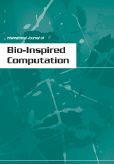
International Journal of Bio-Inspired Computation
Innovating through Nature: Bridging Biology and ComputationInternational Journal of Bio-Inspired Computation, published by INDERSCIENCE ENTERPRISES LTD, is a leading platform dedicated to advancing research in the fields of bio-inspired computing and its applications. With a robust ISSN of 1758-0366 and E-ISSN of 1758-0374, this journal contributes significantly to the discourse in Computer Science, particularly emphasizing theoretical and practical frameworks that mirror natural processes. Situated in Switzerland, this peer-reviewed journal operates under a rigorous editorial process, ensuring high-quality publications that attract considerable attention, as evidenced by its placement in the Q2 category for 2023 in General Computer Science and Q3 in Theoretical Computer Science. With Scopus rankings reflecting its growing influence—ranked #62 out of 232 in General Computer Science and #36 out of 130 in Theoretical Computer Science—this journal invites researchers, professionals, and students to explore innovative methodologies and development in bio-inspired technologies. Although it currently does not adopt an open-access model, the journal remains committed to disseminating vital research that fuels advancements in computational intelligence, fostering collaboration and knowledge exchange in the ever-evolving landscape of computing.

Machine Learning-Science and Technology
Pioneering research at the cutting edge of AI and technology.Machine Learning-Science and Technology is a premier open-access journal published by IOP Publishing Ltd, dedicated to advancing the field of artificial intelligence, human-computer interaction, and software development. Since its inception in 2020, this innovative journal has established itself as a critical resource for researchers, professionals, and students alike, achieving a commendable Q1 ranking across multiple categories in 2023. With an impressive Scopus ranking—#70 out of 407 in Computer Science Software, #26 out of 145 in Human-Computer Interaction, and #73 out of 350 in Artificial Intelligence—it provides a platform for cutting-edge research and significant advancements in machine learning technologies. Accessibility as an open-access journal since its launch ensures that the latest findings are freely available to a broader audience, fostering collaboration and knowledge-sharing within the scientific community. The journal aims to cover a wide spectrum of topics within its scope, encouraging submissions that push the boundaries of what is possible in machine learning applications. By fostering an environment of innovation, Machine Learning-Science and Technology stands at the forefront of this rapidly evolving field, shaping the future of technology and its interaction with society.

Computer Science Journal of Moldova
Connecting Researchers to Shape the Future of TechnologyComputer Science Journal of Moldova, published by the Institute of Mathematics and Computer Science Academy, serves as a pivotal platform for disseminating research in the field of computer science since its inception in 1993. With a focus on a diverse range of subjects, including Artificial Intelligence, Computational Mathematics, and Software Engineering, this open access journal aims to foster innovation and collaboration among researchers, students, and industry professionals. Despite its current positioning in the lower quartiles as per the latest Scopus rankings, the journal remains committed to enhancing the visibility of regional research and addressing contemporary challenges through scholarly contributions. The journal’s open access model ensures that knowledge is freely available, promoting broader readership and impact within the international academic community. As it moves through the converged years from 2019 to 2024, the Computer Science Journal of Moldova continues to aspire toward empowering the next generation of computer scientists while enriching the global dialogue in this rapidly evolving field.